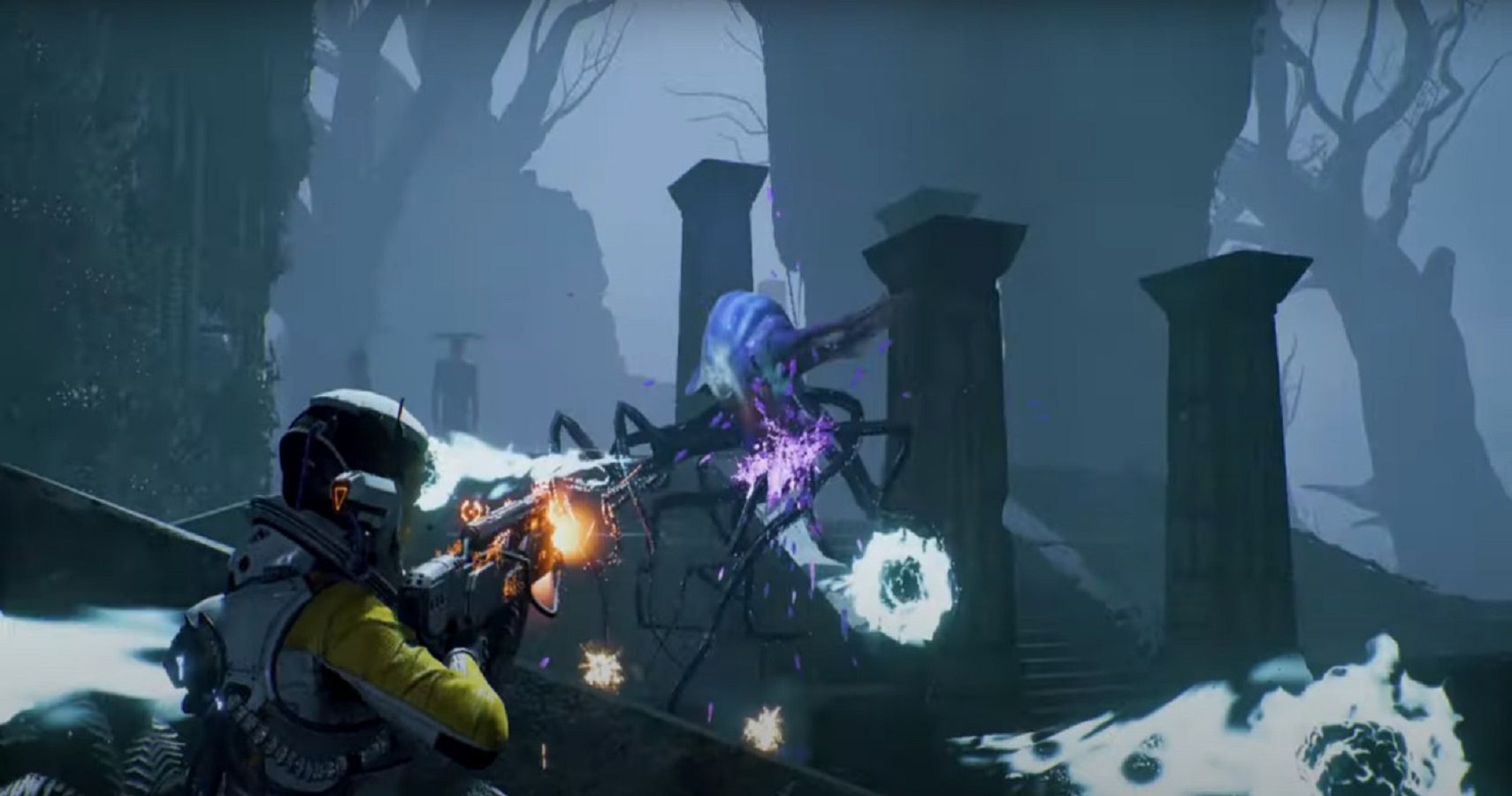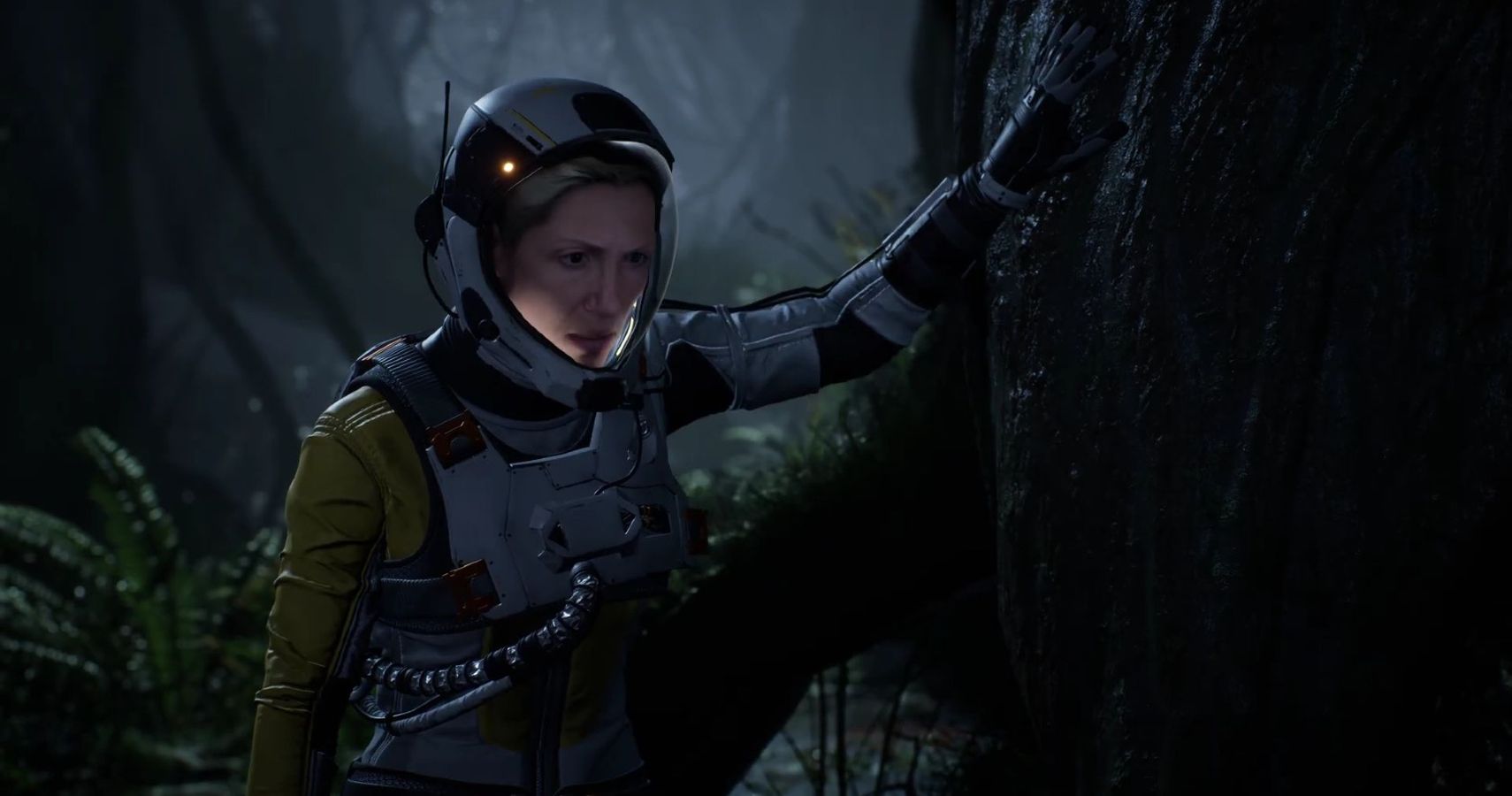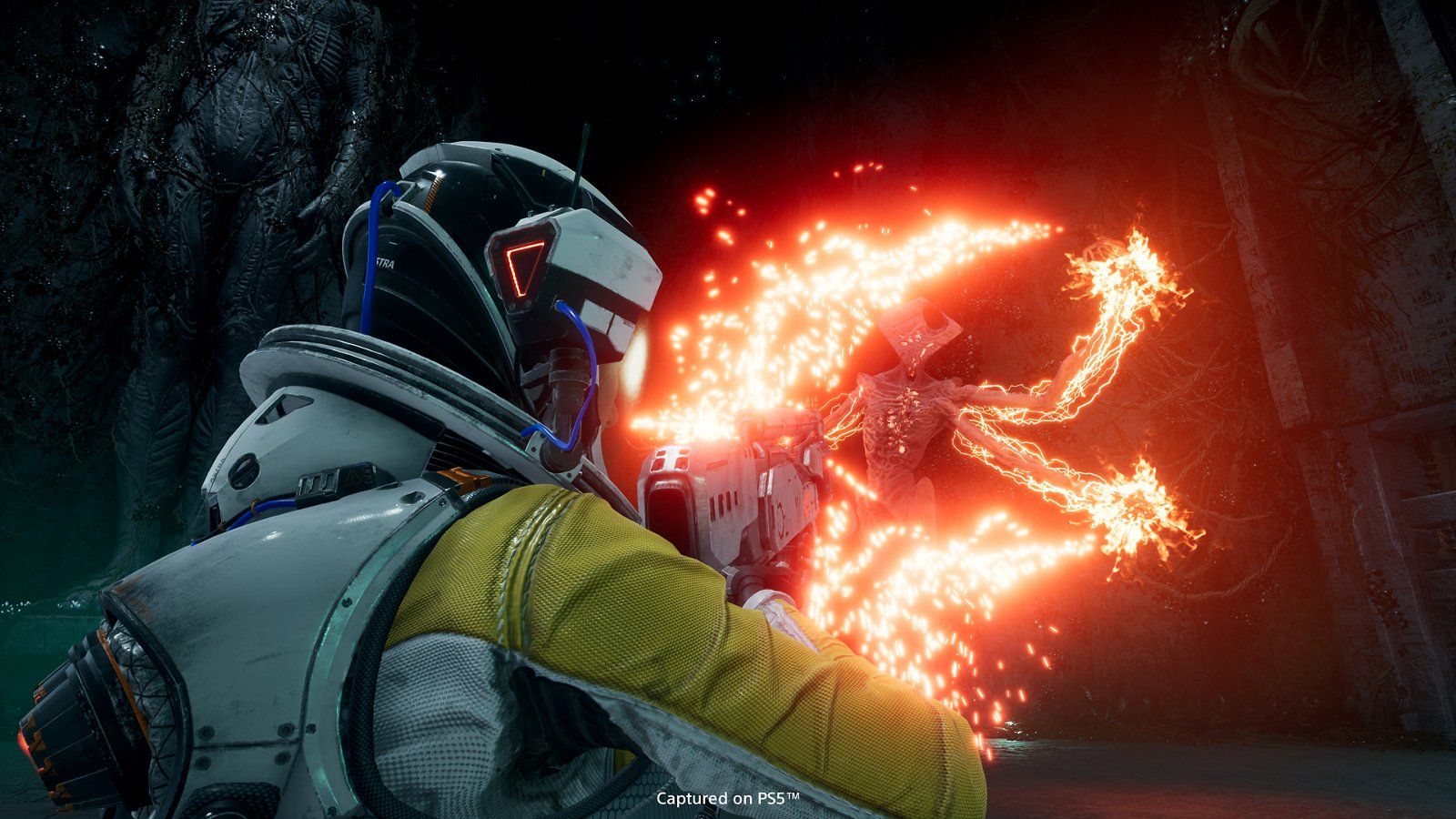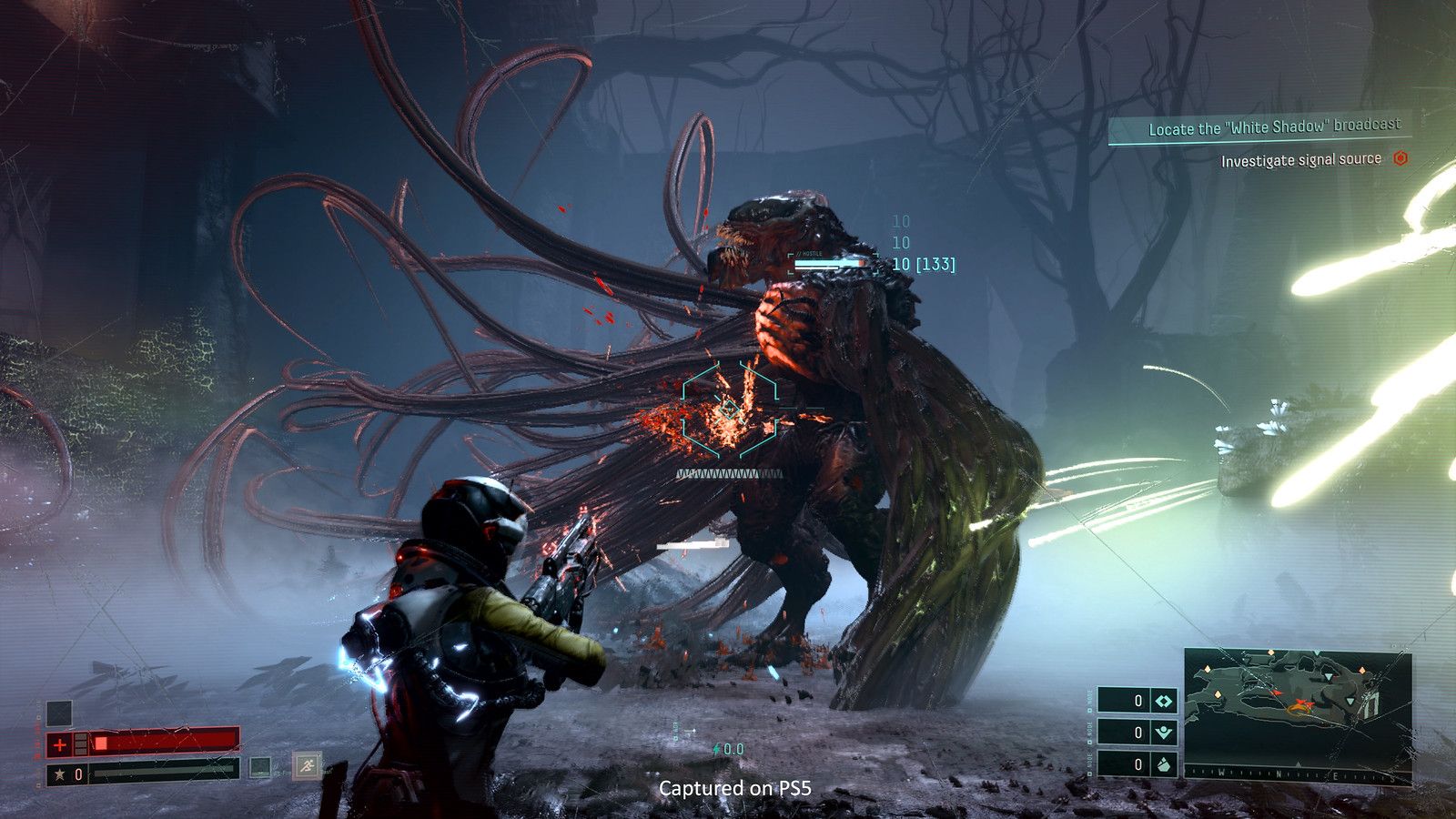Returnal’s Devs On Non-Linear Storytelling And Progress In A Roguelike
You won’t reset to zero each time.
You Are Reading :Returnals Devs On NonLinear Storytelling And Progress In A Roguelike

One of the phrases that has been used over and over again when it comes to Housemarque’s upcoming PS5 exclusive, Returnal, is ‘replayability’. All games want to sell themselves as something that’s so great you’ll never want to play another game ever again, but with Returnal there’s more to it than that. It’s a roguelike where death is a key part of the story, and that means you shouldn’t expect to make it through cleanly the first time you play. Even if you do, there’s so much of the game you’ll have missed out on.
Returnal narrative director Greg Louden and marketing director Mikael Haveri sat down with us to explain how the gameplay encourages this replayability, as well as how it enhances the narrative. “The goal of Returnal is to have describable runs,” Louden says. “And if things are fun once, [players] don’t keep them, we just let you experience them and go through again. So we are trying to follow that similar extreme replayability of Resogun or Nex Machina [two of Housemarque’s previous hits], where it’s the type of game that’s easy to pick up but hard to master. You just want to keep playing and playing to get your adrenaline meter up in order for you to fight stronger and faster.”
While it’s a roguelike where players can expect to die multiple times before making it to certain biomes, things don’t entirely reset to zero at the end of each run. Selene will physically die in Returnal, over and over again – you can even interact with her old corpses. But despite this, she retains some progress from life to life – you’ll find the experience gets easier as things go on. “When you die, there’s certain alien technology that stays with her,” Louden explains. “The Atropine Translocate is the way that she can teleport across the map; you can unlock that and keep it. The way that she can reach towards things with the Grapnel; you can keep that, so it allows you to use these shortcuts. But the shortcuts may actually have a bit of a flaw. It’s risk and reward. Do I take the shortcut? Or do I take the longer, more reliable route?”

That’s another part of Returnal’s design Louden elaborated on – it’s one of the most varied roguelikes around, because there are so many routes you can take, and while some may look easier from the outside, you won’t know until you’ve experienced them a few times each. Even then, your build can make all the difference, so you’ll need to learn the world of Returnal in order to survive and thrive. “Selene crash lands in the overgrown ruins, which is this claustrophobic forest and maze that she goes through,” Louden says. “But she has this consistent goal, this White Shadow signal that’s haunting her, almost like a spell that draws her in. Unfortunately, she can’t get there right away, and her journey takes her into the Crimson Wastes [one of the biomes in the game]. Each biome explores a different layer of the story, with different gameplay options and variations, and allows [you] to explore that variation. You’re not just trapped in the same place. Selene does have a singular goal, but it’s your choice however you’d like to go there. I would tell players ‘sometimes the shortest route isn’t the best route’. And as you start again, it may be worth building yourself up, finding more parasites that you can put on yourself in order to give you benefits, but also look for more weapons [as you wake up at] the crash side again and again.”
This idea of different routes carries over to the narrative design too, as Haveri explains. “When you’re maybe five hours in and you’ve died a lot already, that’s when you start realising ‘maybe I shouldn’t pick up every single parasite’,” he says. “Even the name doesn’t sound like it may be doing you good all the time. That adds to how your character build for that specific run can get much better as you understand how to make those decisions. If you have a really good long run and then you die, that can sometimes be frustrating. I understand that – I’ve almost thrown around my DualSense a couple of times.”

Of course, because you die for real, you leave corpses behind, but these don’t just exist as proof of your failure – they tell a story too. “These corpses also have messages for [Selene] left from other versions of her that have died, maybe thousands of times, or tens of times,” Louden explains. “And these logs can actually be a version of her that’s changed, or maybe evolved into something she doesn’t want to become. A version that’s taken too many parasites and has almost become addicted to that, and all these other elements and darker themes. We don’t go out to scare players, but we do go out to stay with players. We want to linger where when you start returning, you’re looking at something one way and ideally – by the end, you’ll look at it in a completely different way.”
Because the game toys with non-linear storytelling, even reaching the ending is not the end, because you may have missed a lot on your first playthroughs that won’t make sense until the conclusion pieces everything together. “[The ending] gives you an incentive to go back and explore your logs to understand things in a different way,” Haveri explains. “Because there’s a lot of these layers, and they’re sometimes a bit subtle. So there might be things that you don’t pick up until much later on.”

“Yes, there’s a lot of foreshadowing and post-shadowing,” Louden adds. “There’s a lot of other layers in the narrative design in order to create this more enigmatic and mysterious [game] for you to experience, and play through, and unlock – the same way you unlock your progression and skills, you discover the story. That’s been our approach of ‘how do we make a story that survives the repetition?’ and ‘how do you respect the loop and respect the character and make sure that you can follow her?’ – you need to experience the stuff in the future before you experience the stuff in the past.”
Housemarque also spoke to us about Returnal’s unique range of inspirations, Selene’s design, the social systems, and how the sound design can’t always be trusted. They’ll be going live across the weekend.
Link Source : https://www.thegamer.com/returnal-non-linear-storytelling-progress-roguelike/
